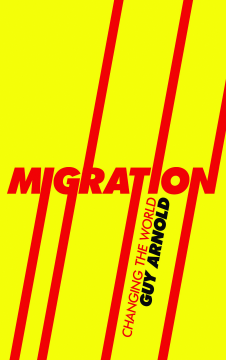
Additional Information
Book Details
Abstract
Constant migration is a worldwide phenomenon that creates sharp divisions between those who accept the need for migrants and welcome the contributions they make and those who oppose them on xenophobic grounds. Guy Arnold provides a comprehensive survey of the consequences of migration.
Arnold studies both the massive internal migrations in China and India that drive economic development and the influx of cheap labour into the advanced economies of the USA and EU. He shows that migrants are essential to advanced countries, filling skills gaps and bolstering ageing and static populations. He argues that the constant flow of people in all directions should be welcomed as a positive assault upon outdated, narrow nationalism.
Packed with statistics that support the argument that migration is a force for positive change, Arnold's analysis will be an excellent resource for journalists, policy makers and students of sociology, human geography and anthropology.
'This book makes a compelling case for governments and regional organisations to show greater openness and, above all, humanity, in matters of migration'
Richard Synge, Consultant Editor, Global (www.global-briefing.org)
Table of Contents
| Section Title | Page | Action | Price |
|---|---|---|---|
| Cover | Cover | ||
| Contents | v | ||
| Introduction | 1 | ||
| Part I: The Americas | 19 | ||
| 1. The United States | 21 | ||
| 2. Mexico | 30 | ||
| 3. Canada and the Caribbean | 35 | ||
| 4. South America | 43 | ||
| Part II: Europe | 51 | ||
| 5. The European Union | 53 | ||
| 6. Britain | 64 | ||
| 7. France and Germany | 79 | ||
| 8. Spain, Italy, Malta and Greece | 90 | ||
| 9. Europe's Small Developed States | 106 | ||
| 10. East Europe, Turkey | 117 | ||
| 11. Russia | 129 | ||
| Part III: Africa | 137 | ||
| 12. Africa and Europe | 139 | ||
| 13. Sudan and the Horn of Africa | 150 | ||
| 14. The Congo, Rwanda, Burundi | 159 | ||
| 15. West Africa | 170 | ||
| 16. Southern Africa | 181 | ||
| Part IV: Asia | 195 | ||
| 17. China | 199 | ||
| 18. India, Bangladesh, Sri Lanka | 210 | ||
| 19. Southeast Asia | 220 | ||
| 20. Southwest Asia: The Gulf, Afghanistan, Iraq, Iran | 234 | ||
| 21. The Asian Periphery: Japan, South Korea and Australia | 244 | ||
| 22. Tentative Conclusions | 253 | ||
| Notes | 265 | ||
| Select Bibliography | 273 | ||
| Index | 275 |
